#harriet martineau
Text

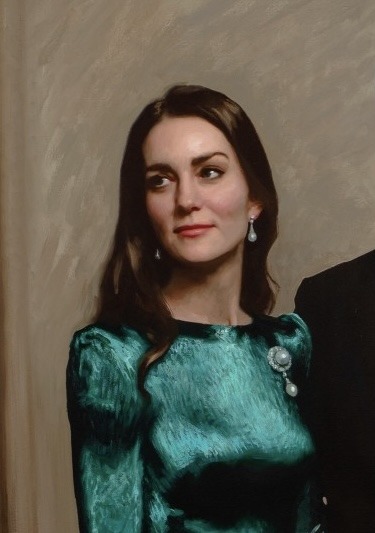
“It is hard to tell which is worse; the wide diffusion of things that are not true, or the suppression of things that are true.” - Harriet Martineau, the first female sociologist, abolitionist, and x4 great aunt of The Princess of Wales.
#ktd#british royal family#kate middleton#brf#throwback#Quotes#Quote#misinformation#Harriet Martineau#Sociology#History#Art#art history
77 notes
·
View notes
Text
The morals of women are crushed. If there be any human power and business and privilege which is absolutely universal, it is the discovery and adoption of the principle and laws of duty. As every individual, whether man or woman, has a reason and a conscience, this is a work which each is thereby authorised to do for him or herself. But it is not only virtually prohibited to beings who, like the American women, have scarcely any objects in life proposed to them; but the whole apparatus of opinion is brought to bear offensively upon individuals among women who exercise freedom of mind in deciding upon what duty is, and the methods by which it is to be pursued. There is nothing extraordinary to the disinterested observer in women being so grieved at the case of slaves, slave wives and mothers, as well as spirit-broken men, as to wish to do what they could for their relief: there is nothing but what is natural in their being ashamed of the cowardice of such white slaves of the north as are deterred by intimidation from using their rights of speech and of the press, in behalf of the suffering race, and in their resolving not to do likewise: there is nothing but what is justifiable in their using their moral freedom, each for herself, in neglect of the threats of punishment: yet there were no bounds to the efforts made to crush the actions of women who thus used their human powers in the abolition question, and the convictions of those who looked on, and who might possibly be warmed into free action by the beauty of what they saw. It will be remembered that they were women who asserted the right of meeting and of discussion, on the day when Garrison was mobbed in Boston. Bills were posted about the city on this occasion, denouncing these women as casting off the refinement and delicacy of their sex: the newspapers, which laud the exertions of ladies in all other charities for the prosecution of which they are wont to meet and speak, teemed with the most disgusting reproaches and insinuations: and the pamphlets which related to the question all presumed to censure the act of duty which the women had performed in deciding upon their duty for themselves. One lady, of high talents and character, whose books were very popular before she did a deed greater than that of writing any book, in acting upon an unusual conviction of duty, and becoming an abolitionist, has been almost excommunicated since. A family of ladies, whose talents and conscientiousness had placed them high in the estimation of society as teachers, have lost all their pupils since they declared their anti-slavery opinions. The reproach in all the many similar cases that I know is, not that the ladies hold anti-slavery opinions, but that they act upon them. The incessant outcry about the retiring modesty of the sex proves the opinion of the censors to be, that fidelity to conscience is inconsistent with retiring modesty. If it be so, let the modesty succumb. It can be only a false modesty which can be thus endangered. No doubt, there were people in Rome who were scandalised at the unseemly boldness of christian women who stood in the amphitheatre to be torn in pieces for their religion. No doubt there were many gentlemen in the British army who thought it unsuitable to the retiring delicacy of the sex that the wives and daughters of the revolutionary heroes should be revolutionary heroines. But the event has marvelous efficacy in modifying the ultimate sentence. The bold christian women, the brave American wives and daughters of half a century ago are honoured, while the intrepid moralists of the present day, worthy of their grandmothers, are made the confessors and martyrs of their age.
-Harriet Martineau, ‘Society in America’, qtd. in Alice S. Rossi, The Feminist Papers: From Adams to de Beauvoir
#alice rossi#harriet martineau#female oppression#abolitionism#amerika#womens history#the more things change the more they stay the same
8 notes
·
View notes
Text

Portrait sketch of William Makepeace Thackeray by Samuel Laurence, 1848 (British Museum).
The 1840s saw the advent of the modern tourist industry and Thackeray was one of many Britons who in that decade flocked to the Holy Land and the Pyramids. (Though it was not until the 1860s that Cook’s Tours began plying the waters of the Nile, Thomas Cook first ventured into the tourist business in 1841.) On board his P&O steamer Thackeray found that all the British excursionists were reading Alexander Kingslake’s Eothen, just published—a book addressed to another eastern traveler, Eliot Warburton, whose The Crescent and the Cross was also published in 1844. The redoubtable Harriet Martineau took ship with friends in 1846 to the East, publishing Eastern Life, Present and Past in 1848—a volume R.K. Webb describes as containing “travels and a torrent of philosophizing,” both utilitarian and Unitarian.
— Patrick Brantlinger, Rule of Darkness: British Literature and Imperialism, 1830–1914

The Temple of Dendera, Upper Egypt, by David Roberts, 1841 (Art UK)
#Eighteen-Forties Friday#1840s#tourism#imperialism#william makepeace thackeray#victorian#travel writing#early victorian era#literature#travelog#orientalism#patrick brantlinger#harriet martineau#egypt#i loved 'vanity fair' as a kid but thackeray does seem like a bit of a jerk (and definitely a bigot)
35 notes
·
View notes
Text
Antebellum Peeps ( TM ) As Dogs
some people and dogs were not included. include more at your leisure..
Albert Gallatin is a Labrador Retriever. He's smart, resourceful, basic, but he also gives very reasonable person vibes, even if he can feel a little boring at times. Still, that complete uninterestingness is what makes him special.
Samuel Howe is a Schnauzer. He's caring, social, protective of what he cares about for as long as he cares about it, AND I have never seen another dog that looks as much like a misogynist than schnauzers do. I like to think the ears and muzzle hair also fit him.
William Lloyd Garrison is a Doberman. He's proud, looks intimidating at first, and doesn't forget or forgive easily. He's also noble, and is just generally popular and well known. You can always depend on him to do what's right, even if its not exactly what you want him to do. This applis for Garrison as a dog breed, but also for him as a human being.
Floride Calhoun is a Chow Chow. She's high strung, bites strangers, and judges and ranks everyone based on their usefulness and importance to her. Her immediate instinct upon meeting someone in need of help is to first consider prosletization ( TM ) and when that person inevitably dies, she says its great that they converted to Christianity before they passed away ( what the FUCK Floride ). Both of these are very Chow Chow behaviors.
Thomas Benton is a Rottweiler. Like a doberman, but more stocky, Benton is courageous, good-natured ( when he isn't faced with Clay, Calhoun, or Foote ), and confidently self assured. He's a stereotypical police dog, however... so uhhh. He is MANLY though.
Andrew Jackson is a Canary Dog in behavior and a Greyhound in physique. He is large. He engages in dogfights. He looks fast, but is actually fairly chill and doesn't mind being lazy. He could rip someone apart. He WILL rip someone apart. He drools. He contains multitudes.
Benjamin Brown French is a Goldendoodle. Like a goldendoodle, French was created upon this Earth for one purpose. For a goldendoodle, that purpose was to remind mankind of their hubris. For French, it was to be the guiding voice of The Field of Blood. Both of them are lovable and funny unique abominations in the worst/best way.
Charles Sumner is an Akita. A very sleep deprived Akita with heart issues. He is very strong, large, bear-like, and could probably take down a tank if he could. Like an Akita, though, Sumner is long-lasting and has a thick skin! Metaphorically.
Harriet Martineau is a Papillon. She's very intelligent, petite, friendly, and has a much smaller stature than most of the other dogs on here, and despite not being American, is actually much more well-educated about American politics than actual Americans! She is also tiny but gives an air of great dignity and royal elegance as well a cuteness.
Julia Howe is a Wetterhoun. She's a water dog, with a natural talent, and despite being fairly reserved, gets along well with other people. She also has a strong will and won't back down from a challenge and is actually way more tolerant than most other people around her notice or give her credit for.
Daniel Webster is a Mastiff. Like a Mastiff, Daniel Webster is SCARY HUGE, has a reputation as being noble and almightly, and is the perfect fighting dog ( in terms of debate ). They both reportedly have the exact same mouth shape. He's also not easily provoked, similar to the Mastiff, and is pretty docile and domesticated when it really comes down to it.
Harriet Beecher Stowe is a German Shepherd. She's willing to learn, incredibly curious, smart and she's actually competant at what she sets out to do. Stowe, also like a german shepherd, is a very recognizable kind of figure, just like how german shepherds are recognizable dog breeds.
John Calhoun is a Border Collie. He, like a Border Collie, is terrifyingly smart. As in, smart enough to be ranked first in The Intelligence of Dogs. He's also adaptable ( to changes in political climate ) and great at herding ( his colleagues to secessionist ideals ), like a border collie.
Jefferson Davis is a Skye Terrier. He only ever had one person he actually loved ( his first wife ), and never moved on after her death. Like a Skye Terrier, he gives off large amounts of old man energy. He had some pretty funky facial hair too once you stop and think about it. I also think it's funny how I'm assigning Davis a super tiny dog when in real life he was like Abraham Lincoln's hight.
John Quincy Adams is a Shiba Inu. He is BOLD and ridiculously PROUD and incredibly CLEAN and GRUMPY and INDEPENDENT and UNHAPPY and DIGNIFIED and ALOOF and THERE IS LITERALLY NO OTHER DOG THAT FITS JQA MORE.
William Seward is a Siberian Husky. Seward, similar to a Husky, is stubborn, clever, capable, and despite having great intentions, does tend to have some odd ideas at times. They're both also dogs that are instantly recognizable on sight, and have something to do with Alaska.
John Randolph is a Pug. He is a pug. He just is. His health issues are infinite. He looks hideous. He is tiny. He vibrates with rage at any given moment. Every noise that he makes only alienates him more. He is such a pug I genuinely can't imagine him as anything else, even before he contracted tuberculosis.
Rachel Donelson Jackson is a Bichon. She just wants to live her life, and move on, similar to a Bichon's passive nature. Small, chill, going with the flow. I can't explain it any better than just saying that she and Bichons share the same vibes.
Nicholas Biddle is a Pomeranian. He's tiny and extroverted and happy and friendly and lively and playful! He also loves being in the center of attention like any other pomeranian. Both Biddle and Pomeranians have fantastic hair and are always alert about changes in their enviroment, and aren't afraid to challenge others. Often to their own detriment.
Mary Todd Lincoln is a West Highland White Terrier. Like a West Highland White Terrier, Mary Lincoln is tiny, and has a temper that can vary wildly depending on what's going on and who she's with. She hates being roughhandled and is normally assured, stubborn and self-confident. Normally.
Louisa Adams is a Pitbull. She's intelligent, trustworthy, kindhearted, and genuinely a good person even if it might not seem like that at first. She enjoys taking humorous situations literally, or at least with tongue in cheek, and if you wrong her she will not let it go. She's also a pretty medium-sized figure, both in society and as a dog.
Abraham Lincoln is a Great Dane. Because TALL politicians mean TALL dogs. Yet, despite being an imposing figure, he's genuinely firendly and is incredibly loving and devoted towards others, including strangers and especially children! He's just in general laidback, but make no mistake, can definately become dangerous if you provoke him.
Henry Clay is a Collie. His defining feature is that he's sensitive and keenly aware of other's emotions, as well as very goal-oriented and is terrified of any prospect of failure on his part. He can be " single-minded to the point of obsessiveness." And like a certain other collie on this list, Clay is also great at herding people towards desired politics.
Fanny Longfellow is a Golden Retriever. She's gentle, smart, affectionate, adorable, and is incredibly tolerant of outsiders. Her friendliness is the stuff of legfends, and she was incredibly popular and well known ( although not very much today ). She'll gladly pull others into her family, and she just gives really shiny Good Vibes.
Stephen Douglas is a Jack Russel Terrier. He has a bite that's ten times larger than his size and is very, very, fearlessly, active. If left bored or unhappy, Douglas will do great damage, like kickstarting Bloody Kansas. He is literally the Jack Russel Terrorist if left ot his own devices.
Margaret Bayard Smith is a Cardigan Welsh Corgi. She's very loyal, devoted, and surprisingly responsible. She has hidden insecurities and despite what others might see as drawbacks, she has shown her effectiveness, intelligence, and presence time and time again.
Theodore Parker is a Chihuaha. He's a good guy and just wants to make sure that things turn out well for his friends and family. He's smaller than you might think he should be, but what he lacks in physical strength, he can easily make up for in bullets. He also needs serious modern medical intervention.
Martin Van Buren is a Pekingnese. He's ridiculously fancy and small. Like a Pekingnese, he's also recognizably cold and determined, and tends to manipulate those around him, and tends to be stubborn and set in his ways. Yes, he truly does seem to make his own rules on how the world works, but he makes up for it by being a dandy.
Varina Davis is a Cocker Spaniel. She is fancy and her hair is fantastic, and just in general, she gives very prestigious vibes about her. She is independent if needed, but still cares for others. Despite this, she still does have a vicious streak a mile wide.
Anna Maria Calhoun Clemson is an Australian Cattle Dog. She's a very intelligent herding dog, like her father, and closely resembles him. She can actually be pretty affectionate, but knows what she wants and definitely isn't afraid to nip people or bite to get what she wants.
Adele Douglas is a Poodle, But specifically, she's of the medium-large variety. She's larger than Stephen Douglas that's for sure. She's intelligent, fancy, traditionally feminine, and is better than you in every way. She's loyal and greatly sociable and energetic. She's protective of her family, and loves them, even after they're dead.
Anne Royall is a Keeshond. She's relatively unknown, similar to a Keeshond, and can learn very quickly. She's a quick learner, intuitive, empathetic, and very persistant in what she believes in what's right, no matter what anyone else tries to tell her.
Lucretia Clay is a Newfoundland. She's calm, motherly, supportive, and a little larger than life. Her sweet nature is her most defining trait, and has I assume fantastic hair. She also has great athletic ability, which might or might not include swimming.
Hugh Lawson White is an Afghan Hound. They're both dignified and aloof with a clownish streak and have also fantastic hair. White, like the Afghan Hound breed, is very old. Or at least, I always imagine him as being old.
Jessie Benton Fremont is an Alaskan Malamute. She was big, smart, and was often in charge, as well as being very influential. She was prominent in her day, similar to an Alaskan Malamute and both her and the breed are distinguished and recognized today. Both of them also kind of had something to do with a gold rush, one Californian, one Alaskan.
Susan B. Anthony is an Azawakh. She's independent and determined, as well as intuitive and understanding about what's going on around her, similar to an Azawakh. She's typically reserved, and while not aggressive, it does take some time and sensibility to get to know her. Like the Azawakh, they're both fast, and they both organize in groups to take down enemies.
Louisa May Alcott is a Greater Swiss Mountain Dog. She's generally happy, enthused, collected, and satisfied with what she has. She's confident in nature and works well with children and her family members. Despite this, she's also vigilant, and can be outspoken and revolutionary if you pay attention...... There are four Greater Swiss Mountain Dogs, by the way. Each one contains vaguely Alcott-like traits. Make of that what you will.
Emily Tennessee Donelson is a Borzoi. She's calm, reliable, and tends to follow others' instructions, but she's also independent and can be rebellious at times. She doesn't need you or anyone, and quite frankly, she doesn't have many strong feelings about leaving if she doesn't feel respected. I realize I am painting a very weird picture of the Donelson-Jackson family here but just listen to me ok.
Robert Hayne is a Cavelier King Charles Spaniel. He's definately not shy, adaptable, highly affectionate, playful, patient, eager to please, and both of them have a higher mortality than others. Both Hyane and the CKCS breed are both highly adorable and dandy-ish as well.
Margaret Eaton is a Basenji. She's friendly, a bit gossipy, though reserved with strangers. She cannot be trained, doesn't bark, and she and the Basenji both resemble pariahs in their lifetime. She has her own goals and wants and isn't afraid to try and reach them. Eaton also just in general feels like she'd be a sort of square, short-furred kind of dog, and I also think she doesn't like wet spaces.
Henry Longfellow is a Samoyed. He's optimistic and friendly and lovable and unique and I have an instant revulsion against using the same dog breed twice otherwise, he'd be a Golden Retriever. The Samoyed's incredibly long and poofy white coat also resembles the long beard that Longfellow developes later on in life.
Sarah Polk is a Yorkshire Terrier. Fairly humble, but still elegant, important, and an air of prominence if she feels like it. She also isn't often taken seriously, despite her genuine great advice, but that's okay, because- " if no one has my back I know GOD has my back can I GET AN AMEN???"
Elizabeth Cady Stanton is a Schipperke. She's determined, steadfast, sturdy, and like a Schipperke, is great at organizing and 'herding' people into organizing movements and the like. She's also a rarer kind of dog breed because the portraits taken of her look very prim and proper, which I'm pretty sure was all on purpose, but either ways, it still works.
Maud Howe is a Saluki. She is very freelancing, independent, and just feels like a rather creative person to be around, all of which are incredibly similar vibes to a Saluki. She's shy, but despite this is also a socialite and interacts with others, playing a part and serving in various societies to help her community. She seems like a very special person, in the end, and really does deserve to be called a special breed of dog.
Sarah Goodridge is an English Setter. She's a gentlewoman by nature, intensely friendly, and she's very active and adores visitors, as well as being sensitive to criticism. There's nothing else. Promise.
#the congressional incubator#henry clay#john c calhoun#daniel webster#charles sumner#andrew jackson#nicholas biddle#sarah polk#mary todd lincoln#julia howe#maud howe#abraham lincoln#lucretia clay#william lloyd garrison#samuel howe#theodore parker#margaret bayard smith#harriet martineau#benjamin brown french#stephen douglas#john quincy adams#robert haynes#william seward#thomas benton#floride calhoun#SOMANY PEOPLE
8 notes
·
View notes
Text
Nowhere is still somewhere at The Portico Library until June 2023, with a workshop on April 22. If you are on instagram please check out @porticolibrary and @reginaldcrayfishofmaine
Bonus a geological map from The English Lakes by Harriet Martineau and some research i wrote on the author, John Ruthven and W J Linton.
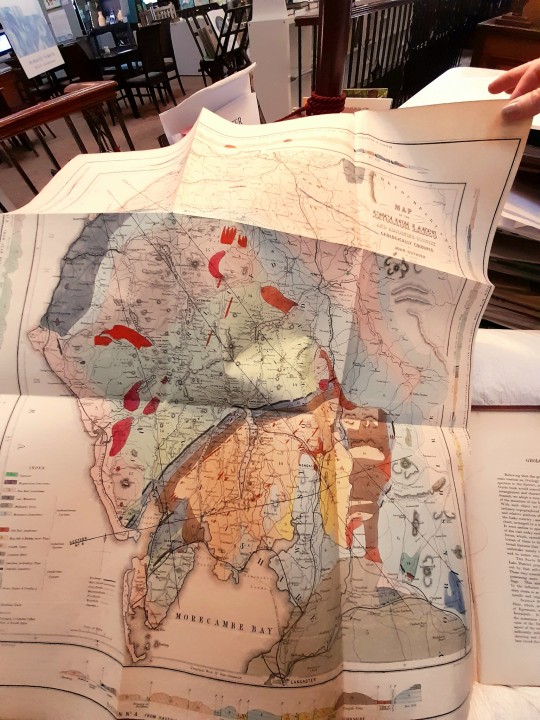
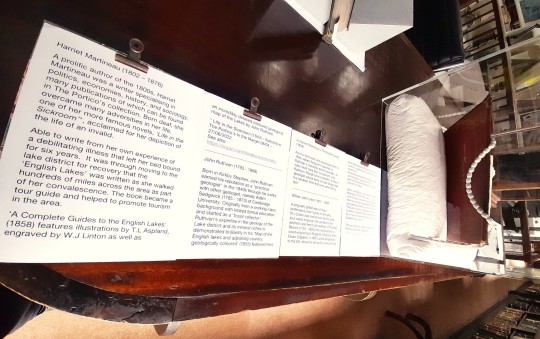
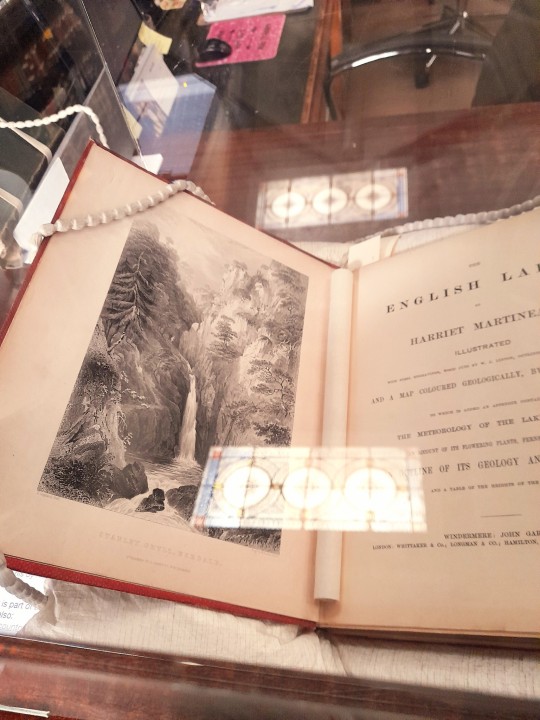
7 notes
·
View notes
Note
I just saw a take on Twitter saying Penelope is doing journalism which makes everything she’s done ok. JOURNALISM. LW is a petty burn book because she’s a jealous loser. Penelope is not a muckraker 😂 Like LW isn’t offering social commentary and criticism on the ton’s decadence 😭😂
Penelope is basically the modern equivalent to a sad girl with a celebrity gossip blog and no actual life of her own. Or like, girlboss!Rupert Murdoch, as I have said before. She's def no Ida Tarbell.
If you wanna read about a woman who was around Penelope's age in that time period and was actually publishing important shit, I suggest looking up Harriet Martineau.
8 notes
·
View notes
Text
The Tower of Beauty and Friendship, Ambleside, Cumbria
Eller How is a handsome villa, high above the town of Ambleside. In 1863 it was bought by the Boyle family, and soon after they added this curious prospect tower. Known as the Tower of Beauty and Friendship, thanks to a unique element of the design, it stands on a mound in the gardens.
Continue reading Untitled

View On WordPress
#Ambleside#Anne Jemima Clough#Armitt Museum#Charlotte Mason#Clara Asch#Eleanor Hocking#Eller How#Harriet Martineau#Henry Boyle#lake district#Newnham College#Tower of Beauty and Friendship#windermere
0 notes
Text
Harriet Martineau, prima femeie sociolog
Harriet Martineau, prima femeie sociolog
(Harriet Martineau. (Credit: Wikipedia))
Harriet Martineau (1802–1876) a fost una dintre primele femei sociologi din secolul al XIX-lea. Deosebit de inovatoare a fost lucrarea ei timpurie despre metodologia sociologică, How to Observe Manners and Morals (1838). În acest volum, ea a dezvoltat lucrările de bază pentru o abordare social-științifică sistematică a studiului comportamentului uman. Ea a…
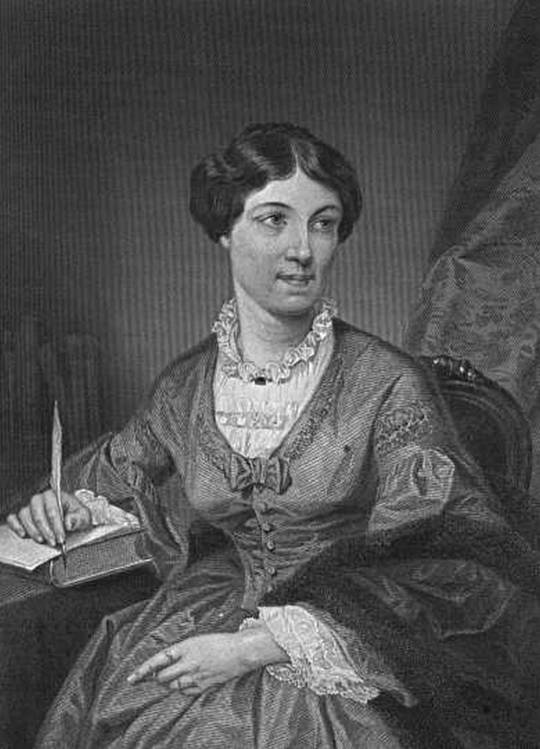
View On WordPress
0 notes
Text

she's just like me fr...
#in short she could popularize while she could neither discover nor invent!!!!#harriet martineau you will always be famous#she wrote this about herself
3 notes
·
View notes
Text
I think the reason I don't really vibe w a lot of "what's your favorite classic XYZ" polls is that it's clear that most of the people voting have only ever read/watched/heard of one or two options. "Who's your favorite classic couple" and then Lizzie and Darcy win every time bc most people are familiar with P&P but not the other classics on the list. "What's your favorite play" and then they put Romeo and Juliet. Like..
This is not me being bitchy, it's just the tiniest of pet peeves. If you want a more well rounded poll, you need to make the options equally or at least mostly equally well known.
#its like saying what's ur favorite soup and then putting chicken noodle vs bun bo hue#like of COURSE lizzie and darcy are gonna win. of COURSE more people have heard of emily brontë over harriet martineau#disgruntled octopus
5 notes
·
View notes
Text
What were Victorian mental asylums like?
Since we're getting to know Jack Seward, I though it would be useful to find out a bit more about Victorian mental asylums of the kind that he owns.
I'm putting this under a cut for discussion of psychiatric abuse, involuntary hospitalisation, and ableist language in historical documents.
The pre-Victorian context

Pre-Victorian asylums were horrific for the poor. Wealthy patients were accommodated in private asylums that were much like private homes, where patients could bring in their own cooks and go out hunting, but poor patients were treated like animals, sharing beds in outbuildings, and often kept chained up or in straitjackets. Part of the problem was that there was simply a shortage of asylums for the poor, leading to overcrowding. (Source)
But by the early 19th century, reformers like Harriet Martineau and Samuel Tuke argued for better treatment, and especially opposed the use of restraints. Asylums gradually moved from treating patients like prisoners to treating them as people in need of care. In 1829, William Scrivinger, a patient at Lincoln Asylum, died after being left in a straitjacket overnight without supervision, which also acted as a spur to that asylum and others to move away from restraining patients. (Source)
Entry to an asylum
The process of reform continued with the 1853 Lunatic Asylums Act. This laid down the process of admission to asylums.
For private asylums (like Seward's), for someone to be admitted they had to have a medical certificate signed by two medical professionals. In theory, that safeguarded against abuse (i.e. people being sent to asylums for spurious reasons) though in practice, if you were willing to pay for a private asylum for a relative, it was relatively easy to persuade two medical professionals to sign off on admission. Women were sent to asylums more often than men, including for "immoral behaviour" such as having an illegitimate child. (Source)

Ticehurst House, a private asylum for the wealthy
Asylums for the poor required a certificate from a single medical professional as well as an order from "a Justice, a Clergyman, an Overseer, or the Relieving Officer (under the Poor Law)". The law straddled the line between the previous carceral approach (requiring any "Lunatic" "wandering at large" to be apprehended, examined and brought to an asylum if necessary) and a protective approach, with legal requirements to look after anyone who "is cruelly treated or neglected by any Relative or other Person having the Care of Charge of him".
What the law didn't provide was any way for the person being taken to an asylum to overrule the decision. They couldn't appeal for their own release, but could be released if a relative or friend were available to take care of them and prevent them from harming themselves or others. (Source)
Life in an asylum

The ward for female patients in Prestwich Asylum, near Manchester
Patients were kept strictly segregated by sex. It was typical to have 10 patients to every member of staff. During the day, patients were often encouraged to work, the men in farms on the grounds (which also helped asylums save money as they could grow their own food) and the women in laundry, cooking or sewing. In the evenings there would be plays, concerts and parties. (Source 1, Source 2)
This was grounded in the principles of "moral therapy", which aimed to teach patients how to fit in and be productive members of society. That sounds a bit grim, but its aim was to be gentle and humane with patients, and to help them live well outside of the asylum. (Source)
When Seward says:
I seemed to wish to keep him to the point of his madness—a thing which I avoid with the patients as I would the mouth of hell.
... this is probably a reference to the principles of moral therapy. Seward's role is to guide patients away from unwanted behaviour, which is why pushing Renfield to "the point of his madness" would normally be antithetical to Seward's treatment approach.
Other treatment varied. Some treatment was ineffective but harmless (e.g. warm baths for patients with depression), but other treatment was more extensive and actively unpleasant or even dangerous (e.g. "cold water therapy": pouring cold water over agitated patients until they calmed down).
[EDIT: I realise from some of the tags that I've given the wrong impression about this. It could be like being given a short cold shower... or it could be people having water poured over them for hours, or being ducked in a pond until they nearly passed out.]
There were very few drug treatments except sedatives, and some of the worst historical psychiatric treatments, like electroconvulsive therapy and lobotomies, weren't introduced until the 20th century. (Source)
By the end of the century, though, the improvements made by early reformers were going into reverse. Restraints and padded cells made a return, especially for poorer patients, and government-funded asylums faced overcrowding and could no longer provide careful, personalised care. (Source)
Modern-day equivalents

Holme Wood, a former asylum that's now an old people's home
I might be off base on this, but reading about Victorian asylums reminded me of nothing so much as modern-day old people's homes, at least in the UK.
They're intended for the care of a group of people who are often marginalised.
They're often in grand old buildings - in some cases, the same grand old buildings, like the one above.
If you're wealthy, they offer a high standard of care that's similar to your life not in the asylum/home.
Poorer people end up in state-funded care that most people agree fall short of the ideal.
Being able to leave the institution can be tricky, and often depends on having supportive friends or family members.
There are regular scandals in which patients are treated appallingly.
But the provision of care for the elderly/mentally ill is known to be a large, intractable problem; pretty much everyone in our society thinks we should do better but figuring out how to achieve that isn't easy.
I don't know how useful a perspective this is? But it feels illuminating to me, particularly in terms of how the care of people in asylums might have been perceived in wider society. If I were producing a modern-day Dracula AU, I think putting Jack in charge of a care home could give the same impression to a modern audience as an asylum would to a Victorian one.
246 notes
·
View notes
Text
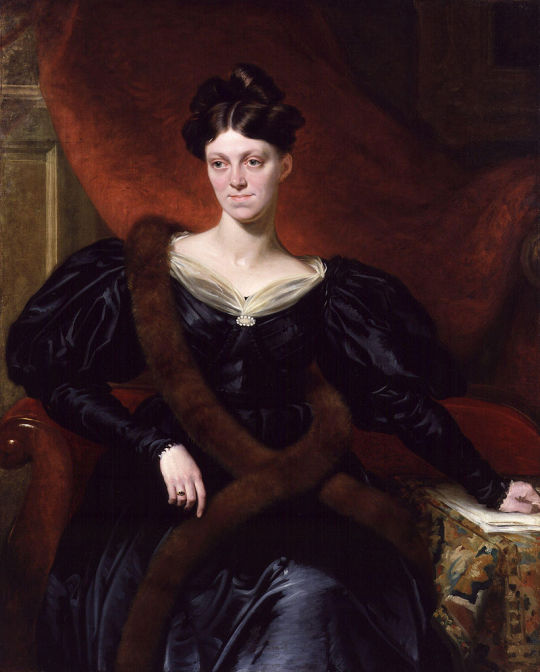
The Princess of Wales, 4x Great-Aunt, Harriet Martineau (1802 – 1876) was an English social theorist and is considered by many as the first female sociologist. She was passionate about a wide range of issues including feminism, universal education and was a committed abolitionist throughout her life. Her writings were enjoyed by a young Victoria who subsequently invited Harriet to her coronation in 1838.
“You better live your best and act your best and think your best today, for today is the sure preparation for tomorrow and all the other tomorrows that follow.” - Harriet Martineau
60 notes
·
View notes
Text
A German lady of extraordinary powers and endowments, remarked to me with amazement on all the knowledge of the American women being based on theology. She observed that in her own country theology had its turn with other sciences as a pursuit: but nowhere, but with the American women, had she known it make the foundation of all other knowledge. Even while thus complaining, this lady stated the case too favourably. American women have not the requisites for the study of theology. The difference between theology and religion, the science and the temper, is yet scarcely known among them. It is religion which they pursue as an occupation; and hence its small results upon the conduct, as well as upon the intellect. We are driven back upon marriage as the only appointed object in life: and upon the conviction that the sum and substance of female education in America, as in England, is training women to consider marriage as the sole object in life, and to pretend that they do not think so.
-Harriet Martineau, ‘Society in America’, qtd. in Alice S. Rossi, The Feminist Papers: From Adams to de Beauvoir
7 notes
·
View notes
Text
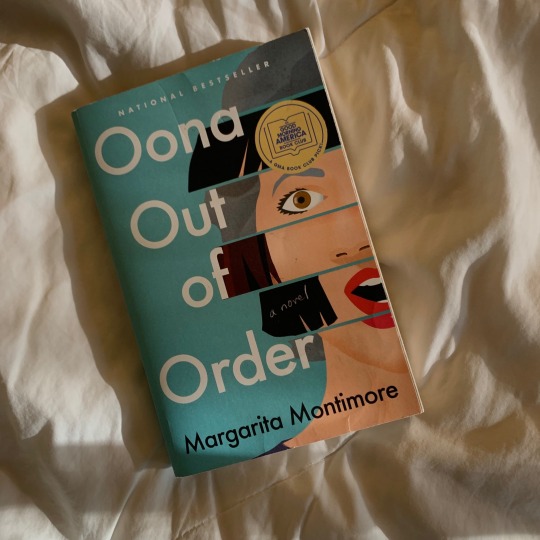

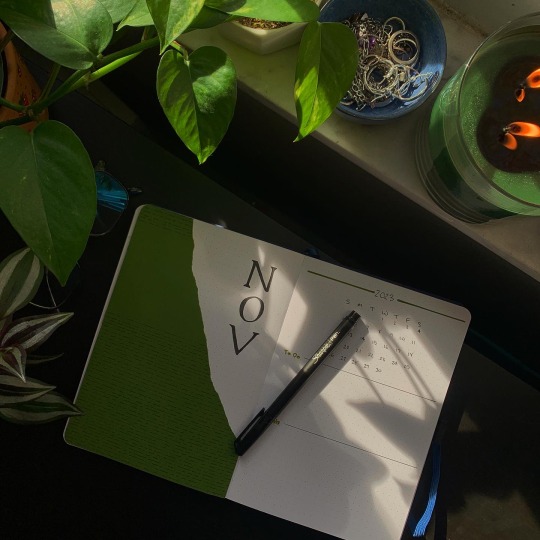
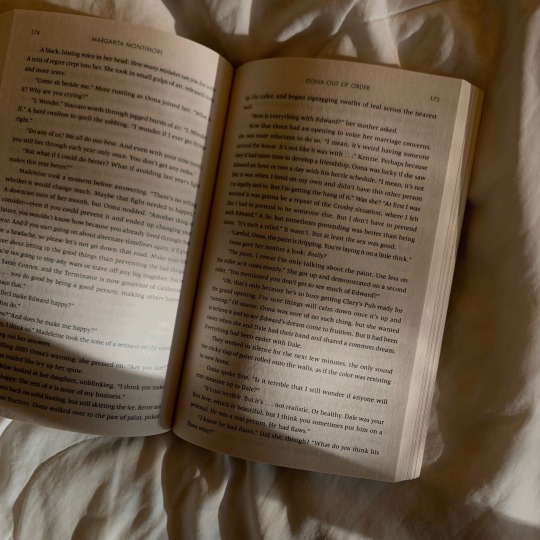
Read in October ↴
favorites: ★
Books
The Fragile Threads of Power by V.E. Schwab (5/5) ★
The Spare Room by Andrea Bartz (just okay)
Why Marx Was Right by Terry Eagleton (4/5)
The Atlas Paradox by Olivie Blake (sigh)
Oona Out of Order by Margarita Montimore (reread. Forever a fave) ★
The Protestant Ethic and the Spirit of Capitalism by Marx Weber (just glad to be done with it tbh)
Scholarly articles
Hay, Carter and Ryan Medlrum. 2010. “Bullying Victimization and Adolescent Self-Harm: Testing Hypotheses from General Strain Theory.”
Martineau, Harriet. 1838. “On Marriage.”
Erikson, Kai. 1986. “On Work and Alienation.” ★
Van der Linden, Sander. 2022. “Misinformation: susceptibility, spread, and interventions to immunize the public.”
Nan Xioali, Yuan Wang, and Kathryn Thier. 2022. “Why do people believe health misinformation and who is at risk? A systematic review of individual differences in susceptibility to health misinformation.” ★
Wright, Caroline, Philippa Williams, Olga Elizarova, Jennifer Dahne, Jiang Bian, Yunpeng Zhao, and Andy S. L. Tan. 2021. “Effects of brief exposure to misinformation about e-cigarette harms on Twitter: a randomised controlled experiment.”
#studyblr#studyspo#am studying#study motiviation#college studyblr#study inspiration#study inspo#monthly reads#grad studyblr#gradblr#grad studies#grad student
27 notes
·
View notes
Text

3 notes
·
View notes
Text
24 in 2024
@lettersfromthelighthouse tagged anyone with the letter L in their username, and that's me! So this is 24 books I want to read in 2024 (not including the ones I've finished already, am currently reading, or planned rereads). I've included the genre along with any other relevant information (if it's for my dissertation, if I'm reading it in French, etc.); most are classics.
Antigone by Sophocles (classic)
Ariadne by Ouida (classic; dissertation)
The Biographer's Tale by A. S. Byatt (historical fiction)
Bitter Orange by Claire Fuller (historical fiction)
Cecilia by Frances Burney (classic)
Contes by Charles Perrault (classic; in French)
The Daisy Chain by Charlotte Mary Yonge (classic)
Deerbrook by Harriet Martineau (classic)
The Doctor's Wife by Mary Elizabeth Braddon (classic; dissertation)
Fairy Tale by Stephen King (fantasy)
Far From the Madding Crowd by Thomas Hardy (classic)
How to Be a Victorian by Ruth Goodman (nonfiction)
Ideala by Sarah Grand (classic)
The Idiot by Elif Batuman (literary fiction)
Jane Austen: A Life by Claire Tomalin (nonfiction)
Lonely Castle in the Mirror by Mizuki Tsujimura (fantasy)
Mortomley's Estate by Charlotte Riddell (classic; dissertation)
New Grub Street by George Gissing (classic; dissertation)
The Perpetual Curate by Margaret Oliphant (classic; dissertation)
Richard & John: Kings at War by Richard McLynn (nonfiction)
Sister Novelists by Devoney Looser (nonfiction)
The Stranger by Albert Camus (classic; in French)
The Way We Live Now by Anthony Trollope (classic; dissertation)
The Winter's Tale by William Shakespeare (classic)
I know most people have done this by now, so I'll just tag anyone who hasn't done it and wants to!
9 notes
·
View notes